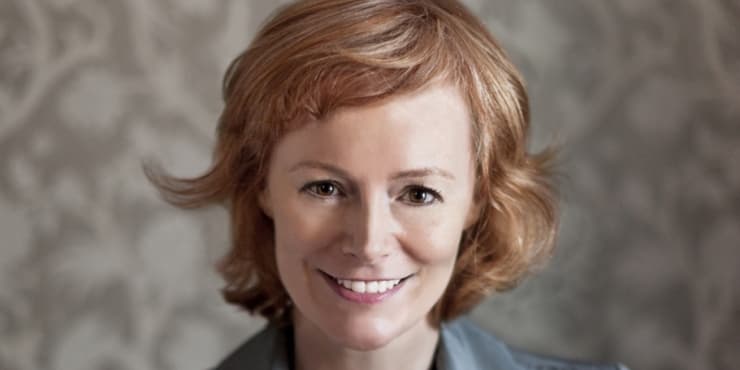Eloisa James is a New York Times bestselling author of historical romance novels who has published over 30 books, translated in 26 languages, with sales worldwide of 7 million. Her novels include How to Be a Wallflower, The Lady Most Likely oraz Say No to the Duke. Eloisa lives a “double life” as she is also a Shakespeare scholar and Chair of the English Department at Fordham University.
Her latest novel, The Reluctant Countess, was published in November by Piaktus. You can find The Reluctant Countess and Eloisa’s other books on the Suffolk Community Libraries catalogue.
Kim byli Twoi bohaterowie, gdy dorastałeś?
My parents were both literary authors; my father, Robert Bly, won the American Book Award for Poetry. They were both horrified when I showed a distinct propensity for reading a low genre, represented by my grandmother’s Barbara Cartland novels. My father decreed that I had to read a classic for every romance. I loved Jane Austen, since she was a canonical author with the interest in human relations that I craved.
One of my favorite novels was I Capture the Castle by Dodie Smith. Smith is best known for 101 Dalmatians, but this delightful YA deserves equal attention.
How do you balance your worlds as Shakespeare professor and bestselling writer?
I tend to stay professorial when I’m Mary Bly, and creative as Eloisa James. But last year I published Lizzie and Dante, which is a novel with a Shakespeare professor as the main character. So my lives suddenly collapsed into each other. I published that novel as Mary Bly, rather than Eloisa James.
Jaki jest Twój sposób pisania?
I write in sprints, generally in company with friends on Zoom. We chat for a moment or two, then set a timer and write for 25 minutes. We then turn the Zoom camera back on and talk through any problems we encountered. I might do 3-5 sprints on a writing day, or up to 10 if a deadline looms.
Some of your characters like the Duke of Villiers hop between books. How do you keep all that information in your mind?
I keep a “Bible” — basically, a Word file that catalogues information for a series. I started doing this after a character who spans four books in the Essex Sisters series grew younger by the fourth book.
How has the world of romantic fiction writing progressed since you started writing?
Progression is an odd word and hard to quantify. Of all genres, I think that romance is most immediate in its response to social change. One huge shift during my career has been the increasing emphasis on consent, in fiction and life. I completely agree with the change, but it has been interesting to see the effect on fiction as certain tropes essentially disappeared (pirates and kidnapping, for example).
The latest book we have here in the UK is The Reluctant Countess. Can you tell us a little about it and how it was to write?
The Reluctant Countess is a novel about a gorgeous woman with a terrible reputation based on an affaire she had as a young woman and her mother’s illicit relationship with Napoleon. Rather than allow herself to be shamed, Lady Yasmin drifts through ballrooms in seductive clothing, flirting and laughing. The Earl of Lilford is a frightfully proper man who certainly couldn’t make a scandalous woman into his countess—except he can’t take his eyes off Yasmin.
Co dalej?
I am currently writing the sequel to Countess, a book called Not That Duke. This heroine wears spectacles, and has red hair and freckles: she’s basically the opposite of exquisite Yasmin.
Jedna książka, utwór muzyczny lub dzieło sztuki, którego każdy powinien poznać?
Putting on my Shakespeare professor hat, I think that readers oughtn’t to stop with Romeo and Juliet, or whatever you were taught in high school. Shakespeare’s Measure for Measure often ends up being my students’ favorite play.
Jaka jest najlepsza rada jaką kiedykolwiek dostałeś?
This comes from the great Nora Roberts: you can edit a page with words on it, but you can’t do anything with a blank page. My version: We all write junk on the first go-around. A working writer is an editor first, and a writer second.
Czy możesz nam powiedzieć coś o sobie, czego Twoi czytelnicy mogą nie wiedzieć?
As of this last fall, my daughter lives in Florence, Italy, and my son lives in Kinshasa in the Congo. People talk about empty nest syndrome, but I feel as if my children flew very far indeed! I am wrestling with the fact that we raise children hoping they will be brave and explore the world. At the same time, part of me wishes they had failed to launch, so to speak, and stayed home with me.

